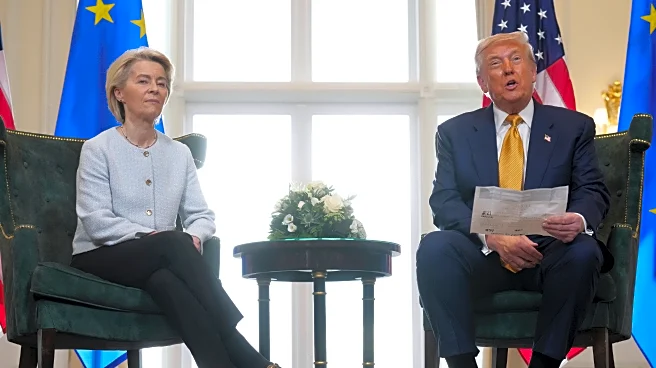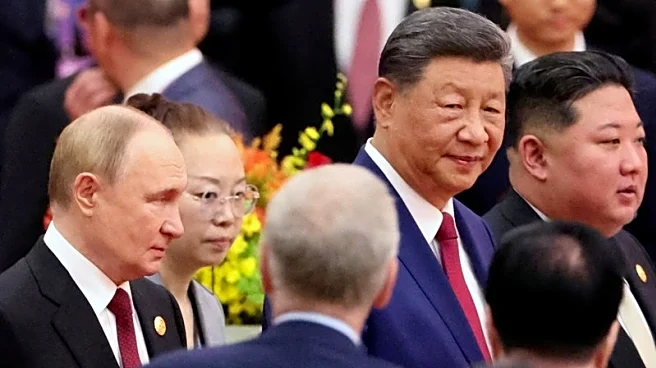What's Happening?
US manufacturing activity contracted for the sixth consecutive month in August, largely due to reduced production linked to higher import duties from President Trump's trade policies. Despite the overall decline, there were some positive indicators, such as an increase in new orders, which rose by 4.3 points to 51.4, marking the first expansion since the beginning of the year. Additionally, the measure of prices paid for raw materials decreased to 63.7, the lowest since February, indicating some relief in cost pressures.
Why It's Important?
The ongoing contraction in manufacturing underscores the challenges faced by the sector due to trade tensions and tariff impacts. This situation affects various stakeholders, including manufacturers, workers, and consumers, as it can lead to reduced production, job losses, and higher prices for goods. The slight improvement in new orders suggests potential stabilization, but the sector remains vulnerable to external economic pressures. Policymakers and industry leaders may need to address these issues to support manufacturing growth and competitiveness.
What's Next?
Manufacturers may continue to adapt to the changing trade environment by seeking alternative supply chains or investing in domestic production capabilities. The government might consider revising trade policies or implementing measures to support the manufacturing sector. Industry stakeholders will likely monitor economic indicators closely to assess the potential for recovery or further decline.
Beyond the Headlines
The trade war's impact on manufacturing could have long-term effects on the US economy, influencing employment rates and consumer spending. Ethical considerations may arise regarding the treatment of workers affected by production cuts. Additionally, shifts in global trade dynamics could lead to changes in international relations and economic alliances.













